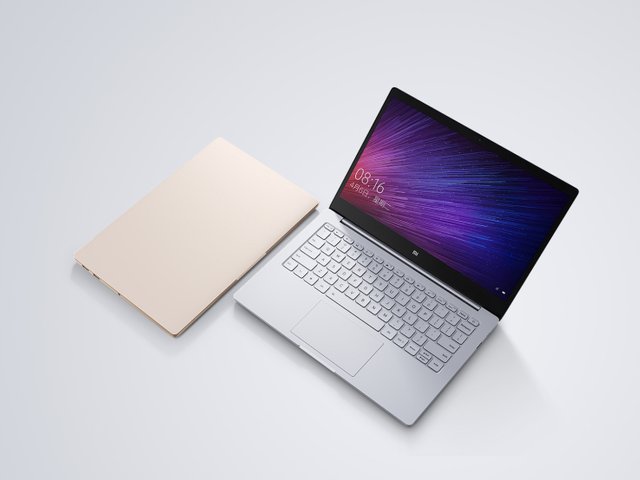Xiaomi’s first laptop is a Macbook Air rival that’s as cheap as $540

Chinese smartphone and smart device maker Xiaomi just announced its first laptop — and boy does it look familiar to products belonging to a company that begins with the letter ‘A’ 😉
The Chinese tech giant is holding a press event to unveil its new Redmi Pro smartphone today, but it also dropped a surprise with the unveiling of the Mi Notebook Air. Even the name sounds familiar, right?
The laptop comes in two sizes — 13.3-inch and 12.5-inch — running Windows with a full-HD display, full-metal body and type-C USB charging and two USB slots. There’s a full-sized keyboard with Apple-esque keys that are individually backlit. The company’s ‘Xiaomi Sync’ software is pre-installed to pair data from a Xiaomi smartphone, and you can unlock the laptop using a Mi Band wearable.
The starting price is 3599 CNY, or around $540, for the 12.5-inch model with the larger, flagship model coming in at 4,999, or $750. Don’t hold your breath on an international launch, since many of Xiaomi products — particularly its first forays into new categories — are China-only affairs. What we know so far is it will go on sale in China from August 2.
Under the hood, Xiaomi is promising an Intel Core i5 Processor with 8GB DDR4 RAM and 256GB PCIe SSD, and an expandable SSD slot. For games, there’s a dedicated NVIDIA GeForce 940MX graphics card. Size-wise, we are talking 306.9 mm x 210.9 mm x 14.8 mm with an apparent weight of 1.28 kg.
Those specs slip a little for the smaller model, which includes an Intel Core M3 processor with integrated graphics, with 4GB RAM and 128GB in expandable SSD.

As is so often the case, Apple is the standard for Xiaomi’s product comparison. The Chinese company said the Mi Notebook Air is thinner (13 percent) than its equivalent Macbook Air, and 11 percent smaller than its rival thanks to a 5.56 mm bezel.
There was plenty of speculation about a Xiaomi laptop last year, and now that has materialized into a physical product it’ll be interesting to see how many units Xiaomi ships. Let it not be forgotten that the company has struggled to justify its huge $45 billion valuation. It sold “over 70 million devices” in 2015 and, while that figure is very respectable, an increase on its previous year while many in the industry are seeing volumes fall, it was some way behind Xiaomi’s original target. Added to that, there’s been no indication that its smart home focus — the idea that Xiaomi can build an ecosystem of products for Chinese consumers — has come to fruition yet.
That focus was a key driver for Xiaomi’s colossal valuation. Because, with hardware a fiercely competitive business with low margins despite Xiaomi’s smart approach to sourcing components, the potential for a data and services business that connects the dots can help Xiaomi stand apart from its rivals.
Some may see a laptop as a unnecessary product line, particularly in China where the audience is mobile-first internet users, but does fit into Xiaomi’s ambition to own every connected device in a Chinese consumer household. Or at least to offer an attractive option for any kind of internet-connected hardware product.
Nice. Too bad it comes with Windows.